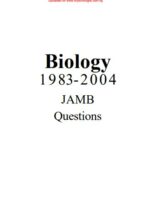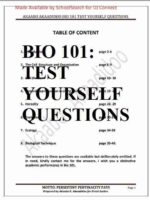Introduction
In designing the content of this latest edition, we continued our previous policy of placing emphasis on the recommendations we have received from colleagues and academics outside our university.
Above all, we have attempted to respond to the invaluable feedback from student users of our book both in the UK and abroad. In this seventh edition we have retained all 16 chapters from the previous edition.
All have been appropriately updated to reflect recent developments in their fields, as exemplified by the inclusion of a section on stem cells in the cell culture chapter. Three of these chapters have new authors and have been completely rewritten. Robert Burns, Scottish Agricultural Science Agency, Edinburgh has written the chapter on immunochemical techniques, and Andreas Hofmann, Eskitis Institute of Molecular Therapies, Griffith University, Brisbane, Australia has written the two chapters on spectroscopic techniques. We are delighted to welcome both authors to our team of contributors.
In addition to these changes of authors, two new chapters have been added to the book. Our decision taken for the sixth edition to include a section on the biochemical principles underlying clinical biochemistry has been well received and so we have extended our coverage of the subject and have devoted a whole chapter (16) to this subject. Written in collaboration with Dr John Fyffe, Consultant Biochemist, Royal Hospital for Sick Children, Yorkhill, Glasgow, new topics that are discussed in the chapter include the diagnosis and management of kidney disease, diabetes, endocrine disorders including thyroid dysfunction, conditions of the hypothalamus–pituitary– adrenal axis such as pregnancy, and pathologies of plasma proteins such as myeloma.
Case studies are included to illustrate how the principles discussed apply to the diagnosis and treatment of individual patients with the conditions.
Our second major innovation for this new edition is the introduction of a new chapter on drug discovery and development.
The strategic approaches to the discovery of new drugs have been revolutionized by developments in molecular biology. Pharmaceutical companies now rely on many of the principles and experimental techniques discussed in the chapters throughout the book to identify potential drug targets, screen chemical libraries and to evaluate the safety and efficacy of selected candidate drugs.
The new chapter illustrates the principles of target selection by reference to current drugs used in the treatment of atherosclerosis and HIV/AIDS, emphasizes the strategic decisions to be taken during the various stages of drug discovery and development and discusses the issues involved in clinical trials and the registration of new drugs.
We continue to welcome constructive comments from all students who use our book as part of their studies and academics who adopt the book to complement their teaching.
Finally, we wish to express our gratitude to the authors and publishers who have granted us permission to reproduce their copyright figures and our thanks to Katrina Halliday and her colleagues at Cambridge University Press who have been so supportive in the production of this new edition.









Be the first to review “Principals And Techniques Of Biochemistry And Molecular Biology”